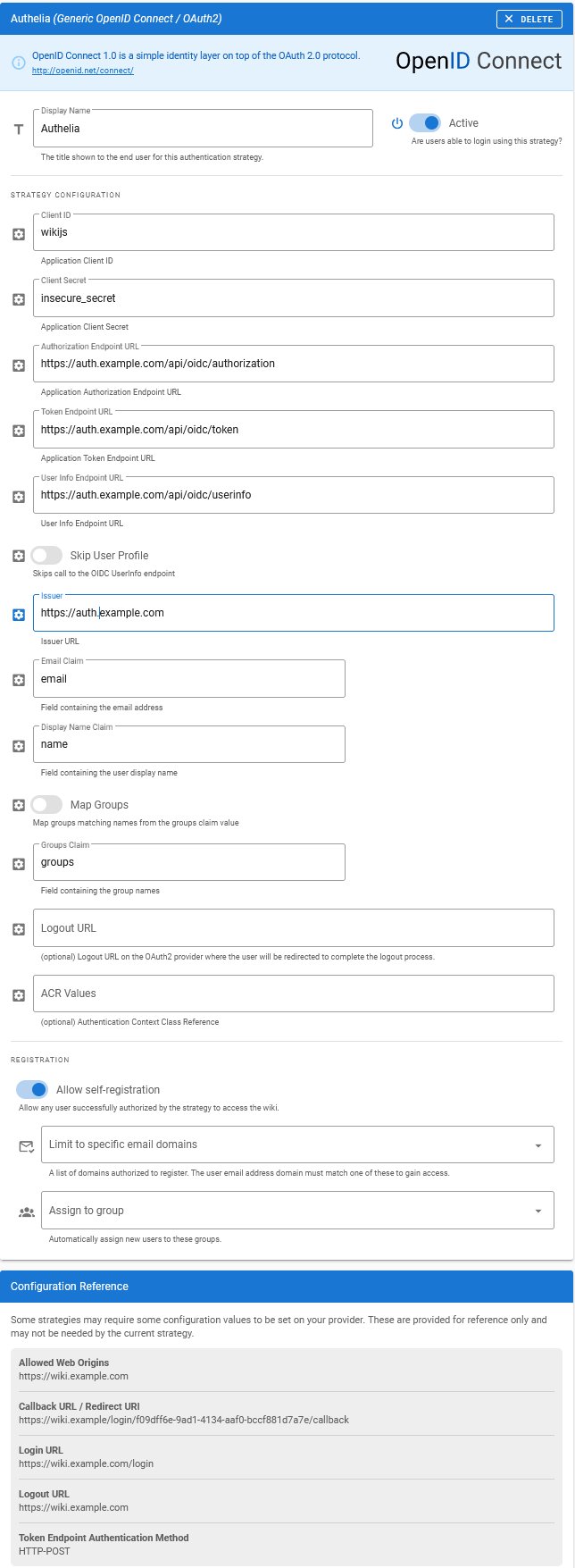Title here
Summary here
Important Reading
This section contains important elements that you should carefully consider before configuration of an OpenID Connect 1.0 Registered Client.
client_id parameter:
client_secret parameter:
This example makes the following assumptions:
https://wiki.example.com/https://auth.example.com/Wiki.jsinsecure_secretThe following YAML configuration is an example Authelia client configuration for use with Wiki.js which will operate with the application example:
identity_providers:
oidc:
## The other portions of the mandatory OpenID Connect 1.0 configuration go here.
## See: https://www.authelia.com/c/oidc
clients:
- client_id: 'wikijs'
client_name: 'Wiki'
client_secret: '$pbkdf2-sha512$310000$c8p78n7pUMln0jzvd4aK4Q$JNRBzwAo0ek5qKn50cFzzvE9RXV88h1wJn5KGiHrD0YKtZaR/nCb2CJPOsKaPK0hjf.9yHxzQGZziziccp6Yng' # The digest of 'insecure_secret'.
public: false
authorization_policy: 'two_factor'
redirect_uris:
- 'https://wikijs.example.com/login/<UUID>/callback' # Note this must be copied during step 7 of the Application configuration.
scopes:
- 'openid'
- 'profile'
- 'email'
userinfo_signed_response_alg: 'none'
token_endpoint_auth_method: 'client_secret_post'To configure Wiki.js to utilize Authelia as an OpenID Connect 1.0 Provider:
Modules > Authentication.+ Add Strategy.Generic OpenID Connect / OAuth2.Autheliawikijsinsecure_secrethttps://auth.example.com/api/oidc/authorizationhttps://auth.example.com/api/oidc/tokenhttps://auth.example.com/api/oidc/userinfohttps://auth.example.comemailnamegroupsCallback URL / Redirect URI for the Authelia configuration.